|
I am a firm believer that everything we do should be based on noble values. When all of our deeds are tied to values, we build something stable, something that lasts and flourishes. It is said that every action starts with a thought and that we should keep our thoughts sweet and pure. “whatever is true, whatever is noble, whatever is right, whatever is pure, whatever is lovely, whatever is admirable--if anything is excellent or praiseworthy--think about such things.” This is, By the way, why I like to think about gardens.
In this blog-post I will touch on an essential value and principle that marks my chosen life path and, in a minute, you will see how this value relates so strongly to – how not – soil. Why do I find soil fascinating? Because soil is lowly and humble. Despite its meek stature It is the factory that builds all living molecules. Paradoxically, soil builds all the wonders of nature and design, including humans. Super-power nations invest so much in outer space research with the goal of gaining leading power and prestige. They look up to the heavens seeking to raise themselves above other nations not realizing that right under their feet they are losing the battle, as did great civilizations of the past that collapsed due to depletion of their soil, deforestation causing soil erosion and other ecological disruptions. Crop failure, decreases in yields and crops dull in nutritional value weakened and retarded the progressing Greeks. When their soil was fertile, they reached the heights of Olympic achievements, peace, philosophy and democracy. By not knowing how to honour their soil and value their ecosystems their crops became nutritionally dull, leading them to wars, rebellions and discord which led in turn to the rise of the Roman Empire and to much farther depletion in values. Another example is the Maya civilization. Around 800AD, their rapid deforestation and increase in population caused drought and heightened temperatures. These led to susceptibility to diseases, high mortality rates and wars that resulted in the collapse of their advanced culture. If we want to truly progress, we can look at horticultural practices of indigenous cultures. Not farming for greed and power they were and perhaps are able to create agricultural systems that resemble gardens rather than mass production fields. We should be able to develop our own community gardens to feed ourselves. With a goal of building systems that improve over time. In our day, we as designers look down beneath our feet with the reverence of star-filled skies above us and humbly work to give strength to mother earth and to all her children. We do this to build each other up. For clean air, clean food, clean water and great natural systems for the future generations. Let us explore these new possibilities provided by nature for the benefit of all.
0 Comments
Wouldn’t you like to know that you have unseen helpers? Wouldn’t you like to wake up to see that what you thought is working against you is actually working for you in ways you couldn’t imagine? Well, I do believe this is true to humans, Nevertheless, in this post I will show you that this is true for plants. Therefore, I will dedicate this blog post to the underworld. The areas you don’t want to think about.
In a perfect world, all living things contribute to each other’s existence. Living things thrive because they are together, although they are different. They form communities that work together for the benefit of all. This is true for us, and it is so in the garden. Those things that are in the dark, damp, seemingly undesirable places of our world are also beneficial and contributing to us. The leaves of a tree become healthy, vibrant green because of those dark places underground and the shadowy, slimy creatures that live within it. Just like humans and animals need bacteria in their gut in order to process their food properly so as not to become sick, so do plants. They need the micro and macro organisms in the soil to process the organic matter, namely, eat and discharge, grow, die and disintegrate in the soil and thus turn the organic matter into available nutrients that can be easily used by the plants in our gardens. No micro organisms, no bacteria, no fungi, no nematodes and no single-celled protozoa mean no food for plants and no protection to root systems from harmful infestations. Healthy populations of bacteria and microorganisms loosen the soil and creates air pockets for water and roots to move throughout. Their sticky secretions bind tiny soil particles into large aggregates thus increasing soil porosity, meaning the spaces in between soil particles. In order to make these little animals work you must allow them the environment that is most beneficial to them: a dark, damp but not soaked, natural environment, clean of chemicals and filled with living and dying roots for them to feed on and colonize around. These crucial living things in the underground transport nutrients to the roots from areas way beyond their reach. Fungi are especially great at doing this. The underground filaments of mushrooms, called mycelium started receiving the attention of scientists in 1998. From then on, through genetic testing, discoveries were made of the ginormous sizes of fungi. Tests that were done at the University of Toronto and US Forestry Service as well as at Washington State Department of Natural Resources, revealed that individual mushrooms can cover hundreds and even thousands of acres underground! In fact, they are by far the largest living individuals on earth. They connect many tree and herbaceous plant root systems together and they transport chemical messages that awaken the plants immunity, when needed, to diseases and insects as well as enlarge their nutrition and water resources exponentially. To keep the environment cool and damp it must be covered. Uncovered soil bakes in the sun, is dried by the wind. It becomes hard as rock, holds no nutrients, no oxygen and no moisture. Roots in that environment cannot function, leading to failure of the entire plant. Weeds on the other hand can survive. They will develop many seeds, fast. They may be pioneer species that are trying to remediate the soil. So, what can you do?
Be gracious to your soil and cover it with a fluffy layer of diverse organic stuff and it will take care of the plants for you in ways that you cannot. We live in a time where we see how devastating our impact on nature can be. Now is the time to give attention to nature, to how nature works. How soil and all that is in it interact and how this affects human wellbeing and health. Let us explore this together and bring the best of nature home. Yours, Sharona  Back to abundance. Not luxury, not wealth. Simplicity. Simple toil. Simple time. Modest action. Rooted in faith in what is being done. Faith in the system being designed. Back from what? Back from deficiency. From inadequacy, depletion, lack. Design. The story started from the beginning. Now the earth was formless and empty, darkness was over the surface of the deep, and the Spirit of God was hovering over the waters. Chaos. And then what? Then God organizes every element in its rightful place. God designs. God places elements according to reason. And then there is peace, creativity, abundance that never ends, always fresh. The power of design is that it rejuvenates. It unites. The spirit of good and the elements become one and the same. Everything settles. Balance is perfected. In a design there can be room for wildlife, for critters, birds and deer as well as humans, because there is enough for everyone to share when humans claim the power to give and be stewards of living things. If a couple install a garden system that works and becomes naturally abundant, they cannot have chaos in their marriage, it is impossible. As your garden grows to become diverse, balanced and resilient so do you. Your life becomes a garden. Now the Earth was formless and empty. The soil in my area is known to be hard, dense clay. It often has bad drainage and boggy conditions. Once the water does drain, the soil becomes so hard that only weeds can make their way through it. Many gardeners in my town struggle with these conditions. I had struggled with these conditions and can remember the toil and discouragement that was involved in keeping the gardens going. Looking back at those years, there was little relaxation and harmonious effect on our personal life and minds. It was not complete lack of harmony, but I’d say that the effect was in small doses and our personal progression was in small increments. I know what we changed that resulted in a significant leap and I will share it with you right here. This is what we did:
The results keep impressing us. The garden is only in its third year and works significantly more on its own. As seasons progress it will increasingly require less work. Fall leaf drop will increase, shade will increase, soil will improve and harvest become more abundant. That means more time for us to enjoy forest immersion, feel the breeze move through the branches and focus on positive and thankful thoughts. I would suggest to humbly approach the design process with faith in the natural system that is being created and it will be so and will be very good.
This certainly happens to me. The original Carolinian forest of Southwestern Ontario is trying to shoot up black walnut trees; little lindens and maples are trying to grow around my forest garden. Many of them are on the other side of the fence, on my neighbour’s property and I don’t always have the access to cut them down. A jungle on the corner of our neighbour’s yard tries to overgrow the corner of our garden and threatens my most successful two-year old apple tree. In this jungle, a boxelder maple grows a foot a day (well maybe two or three days, but it grows fast!). A little leaf linden is intertwined in the chain link fence, gloating at my unwillingness to damage my saws for the sake of cutting it down, and an overgrown, super vigorous forsythia seems like a growing monster, blocking airflow and sunlight. In another adjacent property (There are no less than five properties adjacent to ours) there is a trumpet vine jumping over the old fence and aiming at my three-year old, thriving persimmon tree. From the property next to that a black walnut is lifting its head and reaching out in all directions. In the future it could tower over the neighbourhood, fixing juglone into the soil of my garden and dictating what will and will not grow. But I am not a looser. Should these weeds threaten me? Not at all! It can all work to the benefit of your garden. All it takes is careful observation to see exactly how. No stressing any more about weeds. All and ANY unwanted growth is a golden opportunity for available chop and drop materials. Free, recycled, organic matter that has stored all the great energy of the sun and many tons of nutrients; carbon, nitrogen, trace elements, etc. Local energy, produced right there at your garden and is fed back to the soil to enrich and make it deep and alive. Coppice. Pollard. Chop. Cover your garden’s soil. Shelter your soil with a cooling cover from the extreme summer heat. Keep it from temperature and moisture fluctuations that can shock the plants. Allow the soil microorganisms to thrive and convert organic matter to nutrients that feed your plants. So now, look at all the weeds. They are a gift for you to use. Observe them over time and through the seasons and grow (pun intended) to know their services. Observe the value that is offered by each weed, plant, organic materials, and give attention to utilizing them to the benefit of your land by improving its soil. The dark clouds over our lives, the shadows – are they really against us? If you feel oppressed by weeds or anything else – know that is a lie. All we need is to learn how to make it work for us. When you seek freedom and security, you will be able to be free of oppression and your garden – free of weeds. My garden is relaxed more than ever. Yes, it is the summer of COVID and I, the gardener, had more time for garden attention and observation. Even that worked for good in some ways. Have long, tap-rooted dandelions and queen Ann’s Lace? It is breaking up compaction in the soil and improving soil aggregation, which means: preventing it from becoming too dense, allowing oxygen, moisture, micro organisms and nutrients to linger in between the well-structured aggregates. Have lamb’s quarters? Your soil is fertile. Enjoy! They are more delicious and nutritious than lettuce. Have bind weed? Your soil is being deeply aerated by its long reaching root system, allowing all soil biology goodness to accumulate along the borrowing roots and thus inviting the roots of your precious trees, shrubs and herbaceous plants to thrive in their location. You can easily pull their green growth away dry it in the sun and drop back down on the lucky ground. Have clover? Nature has fertilized your garden with nitrogen free of charge. Some bring benefits, some cause no harm and some – will lay to decompose on the ground. Seeing weeds? Be happy! Your soil is improving. My taste in gardens has transformed and in my opinion it has matured. It has deepened in understanding and stems from humility. I know it is not all about me. Gardening is all about the world, creation, the environment, and other beings. It is about giving, honoring and respecting.
Do gardening and values go hand in hand? They certainly do! An amazing benefit of gardening – you connect with extraordinary people, other gardeners with similar values. How enriching! Talking about being connected; Imagine standing all alone surrounded by plants and complete silence with no movement whatsoever. No birds need it, it doesn’t provide anything but eye candy to the garden owner. Feels lonely, right? Now imaging being surrounded with plants that are interacting with winged creatures of different sizes, orders and families and their off-springs. Plants invite them, feed them offer them shelter. Now there is sound and movement. Now there are a host of friends congregating in the space you created. Now it is a hole different story, isn’t it? There is life buzzing all around, but more importantly, there are relationships. In a garden there is a give-give relationship. You create and give, and what you need comes to you, somehow. If you possess humility – it comes to you by grace, and that is special. When a relationship develops with balance and harmony everybody prospers and the relation perpetuates through cycles of seasons and times. For the last three years, all summer long we have been seeing the calming, gentle flight of monarch butterflies dancing like angels in the air, sometimes we see courtship and mating. They remain in our garden until late fall. We see them in groups right outside our living room window. They seem to like the backyard forest garden too. We see hummingbirds drawn to the bright red crocosmia. Robins and I share the delicious serviceberry crop, and in the fall, goldfinches rest on top of the coneflower’s seed heads and eat them. Chickadees come to the Joe Pye Weed and we often see cardinals and sparrows too. When you plan to plant something new, are you seeking the newest exotic cultivar that will pull human eyes but have no provision to offer to anyone, human, animal or insect? I suggest to become relationship minded. Think communities, families and friends. Not only people friends – plant communities, plant and insect relationships, plant-bird relationships. Plant-human relationships. Paradoxically, humans will come to congregate too because they will feel the prosperous health of your garden. Think of selecting into your community those individuals that have at least two things to offer others. That creates a winning team. Those active members that live to help and support. If you think like this you will create an ecosystem that will change your world. Design a garden in which you are only a part, an element in it and you will never be alone. Join the kingdom of natural friendships. With friendship, Sharona The most exciting thing for me in my flash visits to the new food forest is seeing my fruit trees, “my babies” perform. I noticed their vigorous growth, those bare-root whips I had planted only a bit over a year ago and were growing like tall broom sticks, I then so thoughtfully and carefully pruned, and just as I planned, they responded splendidly and gained the well-balanced tree shapes that I desired. Some will require another pruning cut or two come early spring, but it is clear that they are no longer whips but young trees full of vigour. I am a proud mama. When I got my Canada plum tree (Prunus nigra) it looked like a crooked pencil (see picture above). My Japanese Plum (Prunus salicina x Prunus americana) was straighter but still a thin pencil, same as my apricot tree. Why do I choose to plant such young bare root whips? Because I am convinced that the tree will grow a more vigorous, deeper tap root than if it were root pruned to fit a pot. Roots will continue to grow in the direction they started, which in a pot is a circular direction. This is likely to girdle the roots and prevent them from finding their way deep into the soil. Preventing water and nutrient uptake. How did I get them started? While awaiting patiently for my tree order to arrive in the mail I prepare a couple of supplies:
1. I first prepared the site in advance. Because my yard is on a slope and my property is lower than my neighbors', there is too much water accumulation occurring in our wet spring season. The water saturation causes the soil to become very compact and prevents oxygen from reaching the roots, therefore I created a wooden box frame of 4x4’ and filled it with locally made triple mix. It is made of local natural leaf compost, peat moss and topsoil. I buy it from the nearest landscape supplier up the road from my house. In this raised box I plant a tree. This keeps them elevated above any excess moisture that might occur. 2. Very importantly I use no soil amendments and absolutely no fertilizers, choosing to start these trees on a lean diet. Why native lean soil? To force the trees roots to search deeper for nutrients by sending their roots farther away. If all the nutrients are placed close to the tree trunk there is no incentive for the roots to grow any farther. That’s where they will stay. When dry periods come there will be much less water available to uptake and when winds blow through dense new leaves, there will be no strong anchor for the tree. Root development is always first priority with any plant. Especially trees. They will have plenty of future to leaf out and grow shoots but they will never get there without a healthy and well-developed root system. 3. I Created a fungal environment. I distributed mycorrhizal fungi spores on the bare roots right before placing them in the planting hole. I distributed a little more around the planting hole. They will germinate and grow a mycelium mat of white hyphae (non fruiting, underground mushroom bodies) and will quickly colonize the roots providing protection from pathogens. With the Mycelium’s wide-reaching hyphae (strands) it will allow the roots to reach and draw more nutrients from the soil therefore providing more nutrition and faster root and shoot development. Why will this white mycelium be eager to colonize the roots? It feeds off of the starches created by the trees photosynthesis because it has no ability to create photosynthesis of its own. Remember mushrooms and their underground bodies (strands) lack green pigmentation because they have no chlorophyll which uses light and water to make nourishment for itself. Since they cannot process nutrients to make their own sugars, they suck it out of the tree, but they provide the tree with way more nutrients than they take. They are a very humble, helpful and reliable friend to trees. 4. I made sure the graft union remains 2-3 inches above soil level and I also made sure it faces to the north to avoid possibility of sun scorch damaging the graft. I tapped the soil backfill down to prevent air pockets. 5. I Protected and anchored the tree. #1 threat – rabbits and rodents. I placed either a white plastic sleeve or a ring of chicken wire fencing around the tree, or both. I don’t believe there can be too much protection for the trunk of a tree. This is a seriously important step. The white plastic will also reflect back the sun rays and prevent sun scorching. 6. I mulched. I used what I had on hand. Dried leaves left from last fall, straw, wood chips and freshly cut comfrey leaves. I planted comfrey around trees specially for the purpose of harvesting their leaves for mulching around trees. Comfreys' exceptionally long taproots draw minerals and nutrients that other herbaceous plants cannot reach. These nutrients break down into the topsoil surrounding the tree roots. Until they break down, they will keep moisture in the soil, regulate temperature, prevent weeds from germinating and allow the microorganisms that live in the soil to thrive. The microbes will break down organic matter, digest the mulch and improve soil structure. They make nutrients available to the trees as well as improve the oxygen levels in the root zone. 7. Prune Prune Prune! I use disinfected, sharp, good quality secateurs. I always prune second year trees right after planting. Why? Pruning at this stage will prevent any waste of time and growth energy by allowing it to develop a desired structure early on. Pruning will also stimulate growth. First year whips need to grow higher before pruning so I leave them until I can prune to about 3 feet. If you want a taller trunk you should prune higher. Not all trees will be pruned in the same way. I kept two things in mind: the height from which I wanted the trunk to start branching out and whether I wanted the tree to grow with an open center or have a dominant, center branch. I am rather short and don’t feel that struggling to reach high into a canopy to pick fruit will be fun for me so I chose a fairly low branching point. The shape intended depended on the type of tree. For example, my apple trees I generally allowed to create a center dominant upright branch. For the stone fruiting trees such as plum and apricot I chose an open centre form. I observed and interacted to correct pruning in the upcoming stages in order to achieve the branching I wanted. Is pruning a bit scary in the beginning? It’s a little like having your baby circumcised, you can be a bit nervous except this does not hurt the tree. Pruning will make it strong and vigorous. The more you do it the more comfortable you’ll get. Look at the photo above. The white arrow points to the pruning cut that I made last summer. I wanted the tree to branch out about 3 feet above ground so I first allowed the whip I planted to grow straight up. I actually never took a photo of this stage because It looked ridiculous. Then I pruned the top off to a three feet tall young tree. New buds developed only the next spring and shot up amazing 5 feet long branches. That is a lot of growth for one year! The Japanese plum trees' branches grew too fast and became heavy before their tissue became woody and strong. Branches started breaking off from the weight of the leaves so we shortened the branches from their 4 feet length to two feet. The breakage thinned out some branches but still maintained a great vase shaped form and continued growing more moderately. 8. I Planted diverse companions; catmint and wildflowers to draw pollinators, comfrey to draw deep laying minerals upward to the topsoil. It will accumulate nutrients and be used as green mulch. I planted ground covers such as strawberry and clover to keep weeds away, moisture in ground and food for us, and nitrogen fixing plants such as clover, lupine and seabuckthorn shrubs. Conclusion remarks: All in all, I don’t regret anything I have done. The trees seem very happy. I see lots of mushrooms growing on the wood chips that I layers all over the garden’s soil. This indicates that the soil is fungi dominated rather than bacteria dominated and this is very healthy for the trees and shrubs.
If you have any questions or experiences you would be willing to share please write them in the comments. Your input will be most appreciated as it will enrich our gardener’s communal experience and interaction. My hope is that you have and will have happy planting and growing too, with abundant yields. Yours truly, Sharona In the forest garden, things started happening right from the start, rewarding all our senses. White clover popped up through the wood chips, a remnant from the old lawn that was once in our back yard. I was happy to see it and even happier to see it spread into a stepable, hardy mat. No other weeds grow in it and I see bees enjoying its nectar even as late as November. It is and will continue to transmit atmospheric nitrogen into the soil which nourishes my fruit trees. I plan to spread it around other trees. During my flash visits in the garden I would nourish on asparagus, lettuce, purslane and daylily flowers, I would taste-test various berries all growing on their own without any of my help. Not all crops succeeded but there was enough variety to allow me plenty to enjoy. While my forest garden develops there is still plenty of abundance. In the months of May and June we enjoyed an almost daily harvest of beyond organic, freshly cut baby kale and baby spinach from these two 4x4' raised beds tucked in the back corner of my food forest. While the fruit trees are still too young to bare fruit, I enjoy the fastest fruiting plants – the berries! I tasted plump, blushing gooseberries for the first time and found them to be surprisingly delicious. The exceptionally rainy season produced the largest and sweetest blueberries I had ever harvested and the ever- expanding carpet of everbearing strawberries produced juicy, sweet strawberries. Some developed botrytis (grey mold) due to the constant moisture but enough were left untouched and a few litres are still stored in the freezer. Black raspberries, I had heard about them and finally got the chance to taste their sweet and pleasing taste. Trying different cultivars, I grow red, yellow and black raspberries, Red, white and black currants, five varieties of blueberries, honeyberries, gooseberries and three varieties of strawberries. One variety I planted among a perennial garden some years ago and it has finally spread and produced abundant fruit. One other berry is the mother of all herbal medicines and superfoods – seabuckthorn. Going into it’s 3rd year I am expecting its first Orangy-golden crop by next summer. Even serviceberries were abundant and they were also stored in the freezer. I decided to save them for something special and that occasion did come to my excitement. I will tell you about that later. I quickly cut off all the garlic scapes, they are the flower stem of the garlic plant and made them into pesto and froze it in many small portions. Removing the scapes sends more energy into the bulb for its development. Soon after, I quickly harvested five baskets full of garlic heads! They will last us until next harvest and beyond. I make a new Caesar salad dressing with creamed almonds and roasted garlic that is better than any Caesar sauce I had ever tasted. Now we can roast garlic as much as we want. Also, basil was abundant, especially the ones grown in containers and pesto was quickly ground and frozen for latter use. As a full-time student, I need quick, accessible and satisfying food. The pesto spreads are tasty and nutritious and I enjoy them on and with everything I eat. Oh, I promised to tell you about the serviceberries: I made a 100 % traditional indigenous meal together with my friend Laura Schultz to share with co-students and with our amazing teacher Teri Sherwood. It gave me the golden opportunity to use my stored serviceberries. We chose to make a pudding to go alongside a wild rice salad. T’was a-mazing! And super easy to make. Serviceberry, Amelanchier canadensis is my #1 best recommended small tree to plant in the urban garden. Here is the recipe for the saskatoon (serviceberry) pudding, it is taken from the Dietitians of Canada website: Saskatoon Berry Pudding 2 cups serviceberries (AKA saskatoon berries) ½ cup maple syrup 1 ½ cups water plus ½ cup water ½ cup corn flour or any other flour (corn flour is authentic to indigenous cultures in our area.) Combine berries, 1 ½ cup water and maple syrup in a medium size pot and bring to a boil. Lower heat and simmer for about 15-20 minutes. Place the flour inside a small bowl and add ½ cup water. Mix well. Add the flour mixture to the berries and cook on low heat stirring it well for about 10 minutes or until thickened. Move to a glass jar and let cool. With loving harvests,
Sharona References: Canadian Home Economics Foundation, Aboriginal Nutrition Network, Dietitians of Canada. (2016). Notes From The Dietitian. Retrieved from: https://www.dietitians.ca/Downloads/Public/08---Recipes/10-Saskatoon-Pudding.aspx Gardening as a manifestation of freedom“The ultimate goal of farming is not the growing of crops but the cultivation and perfection of human beings” Said Masanobu Fokuoka and thus offered a liberating concept to aspiring food gardeners and farmers.
As for my forest garden, I decided what I wanted, I researched, I planted, I mulched. Now what? The busy student’s life that I took upon myself, combined with other responsibilities is allowing me only random short, flash visits in my gardens. This circumstance forces me to let go of control. I cannot force every nook and cranny to look as perfect as I’d like. Things I really wanted to do such as spreading a thick layer of wood chips were just not possible to fit into my schedule. It would have been extremely helpful but I had to cancel that plan. During summer I came home from one job, looked at my gardens, saw the work I needed to do and ran to my other job. As I served my customers all these occurrences were being contemplated in the back of my mind. I was awaiting patiently and faithfully to see how this situation is leading me to resilience, experience and to good understanding. No time is lost. Everything works for good. I am guided to be free of worry and concern. I have no choice. I had designed the forest garden and now I have to implement the “No Work” method, or very little work method. This circumstance brings a new opportunity - requiring me to become awake. It was said loud and clear and is worth recalling: “Therefore, I tell you, do not worry about your life, what you will eat or drink; or what you will wear. Look at the birds of the sky; they do not sow or reap or gather into barns – and yet your heavenly father feeds them.” No human that ever read this verse could forget it. We are meant to live as liberated beings under gracious abundance and love. The flash visits to my garden have become meaningful, almost like the visits of forbidden lovers in secret. They make me mature; they teach me to accept things as they are: weeds or harvest, balanced areas and imbalanced areas. This circumstance is teaching me hands-on to let go of expectations and enjoy the presence of my beloved gardens with no strings attached. Even the infestation of flea beetles that nearly destroyed my eggplants and bok choy last year provided a real-life lesson in Integrated pest management, and an opportunity to change and try growing different crops instead, crops which, I believe, will provide better nutrition. All is contributing to the learning experience. The various weeds provided a convenient supply for my rather extensive herbarium weed collection that was required for one of my courses. In another course I studied the traditional indigenous uses for many of the weeds and I developed a great appreciation and respect for them. I even collected some. My teacher dried them and made salves and a wonderful lip balm from them which were given to all the students in class. From this teaching comes an idea that I might farm some of the weeds such as chickweed, plantain, mullein, calendula and goldenrod in order to make salves, one day, when I have time. What a better gift to offer people than natural, beyond organic self-care, soothing products? What a great opportunity to allow things to unfold. To allow processes to happen. To liberate the elements of my environment to do their thing and liberate myself to not be attached to the results of my efforts. Gardeners are leaders of their land. Like in any area, when developing leadership, it is crucial to not have intentions to control. True leadership IS lack of intention to control. When you liberate your surrounding and yourself things flow with ease and become fruitful. So it is in any relationship or action, also with a garden. When I had to do a “How to” presentation for one of my courses, it was clear to me that I will do a seed bombing presentation. I will demonstrate the freedom, trust, hope and faith in nature by creating seed bombs. My seed bombs were received with as much joy as I had for them and my co students and teacher asked to go outside (they knew I had asked for permission from the proper authority), even though it was cold, raining and full of wet slush, and throw the seed bombs near the school’s wetland. They look yummy but they are not chocolate truffles, they actually have composted animal manure in them. Yes, we dropped them like birds’ droppings, knowing they will grow wildflowers for wildlife to enjoy. It proved to be a wonderful stress reliever in the midst of our final exams. I then took seed bombs to my food forest garden and dropped them around the fruit trees. I promise to share with you updates once they grow. My garden became a manifestation of my freedom. Abundance comes easy. Abundance comes with love and with faith. We open up a space for them, and they come. Yours Truly, Sharona  With hopes and dreams on one hand and circumstances on the other, I was hopelessly observing my gardens and thinking, "Can only retired people really have enough time to invest in all that their gardens need? If I could only fit my gardens needs into my busy schedule!" For me, gardens in general have become my avenue to self-realization, therefore I could not drop my dreams. So, I kept searching. I kept observing other gardeners and soon found new approaches that would allow new ways of tackling the gardening issues altogether. This is what my blog is going to be about - In this blog we will travel the road of discovery that leads to freedom and abundance as stewards of our gardens. The famous saying by the Masters of masters was “You shall know the truth and the truth shall set you free.” I was not free as a gardener. I was a struggling gardener. So, I searched for the truth and for the wonders of nature so that I can know them and become free as a gardener. What I found was – Permaculture. Why Permaculture? Well, because it is permanent and self-sustaining. It is true to its nature. If we, the gardeners, respect the nature of the garden and not impose upon it ways that are not of its own, it will reward us in new ways that we have not yet experienced. The first reward in adopting permaculture to my back-yard gardening was that there is hardly any need for watering and weeding. Why? The nature of natural plant habitation is found in forests, where the floor is not raked, not tilled and turned. It is covered with twigs, leaves, branches, mushrooms, and all sorts of fungi, and swarming with wildlife that live in and off that floor. Nobody mows it or manicures it, and in that environment the trees and plants thrive for hundreds, sometimes thousands of years. Never watered. Never fertilized. So, I set out to create the same floor covering. There will be no more lawns! “It is all about the covering” says Paul Goutschi in his famous documentary Back to Eden. All it took was one phone call to a local arborist and some patience to wait for the prized wood-chips pile to arrive at my driveway. I also prepared some cardboard and a roll of construction paper that I used to cover the lawns before laying the wood chips on top of them. This would kill the grasses and weeds and convert them to humus. (Whitefield P. (1993), Permaculture in a nutshell, Making a mulch bed, P.32-34, Hampshire: Permanent Publications.) The first thing that struck me after I lay the floor covering in my gardens was: There was no more pooling of water and mud as was normally the case, especially at springtime. The second thing that I realized quickly was: There were no mosquitos! Mosquitos like the moisture held in between blades of grass. Wood chips are not a favourable habitat for them. Wood chips pull the moisture down to the ground leaving no moisture for the mosquitos. A win-win situation! The third problem to be solved was weed infestations, especially Yellow Nutsedge (Cyperus esculentus), also commonly called Nutgrass and wild garlic that grew like green unwanted hair everywhere in the lawn and in and among the perennials. Yellow Nutsedge grows back in 3 days after weeding it, even more dense and vigorous than before. A thick application of wood chips, about 8 inches and bye-bye Nutsedge! Bye-bye weeds! Broad-leaf weeds around the asparagus? No problem! A few buckets of wood chips applied around them and they were perfectly weed free for the rest of the season! Three weeks after the wood chips application, the wild garlic pulled out of the ground with the entire bulb and root attached. The soil in my gardens is clay. When I had lawns, the bulbs of wild garlic, as well as all other unwanted weeds would remain rooted tightly. The thick layer of wood chips loosened their hold and out they came with the entire root intact - Relief again! Now I can come to my gardens for quick visits with no need to work. I only need to harvest its delicious fruits. |
Sharona GorenAvid gardener. Experimenter. Striver. Nature lover. Seeker. Archives
December 2022
Categories |
Site powered by Weebly. Managed by Netfirms






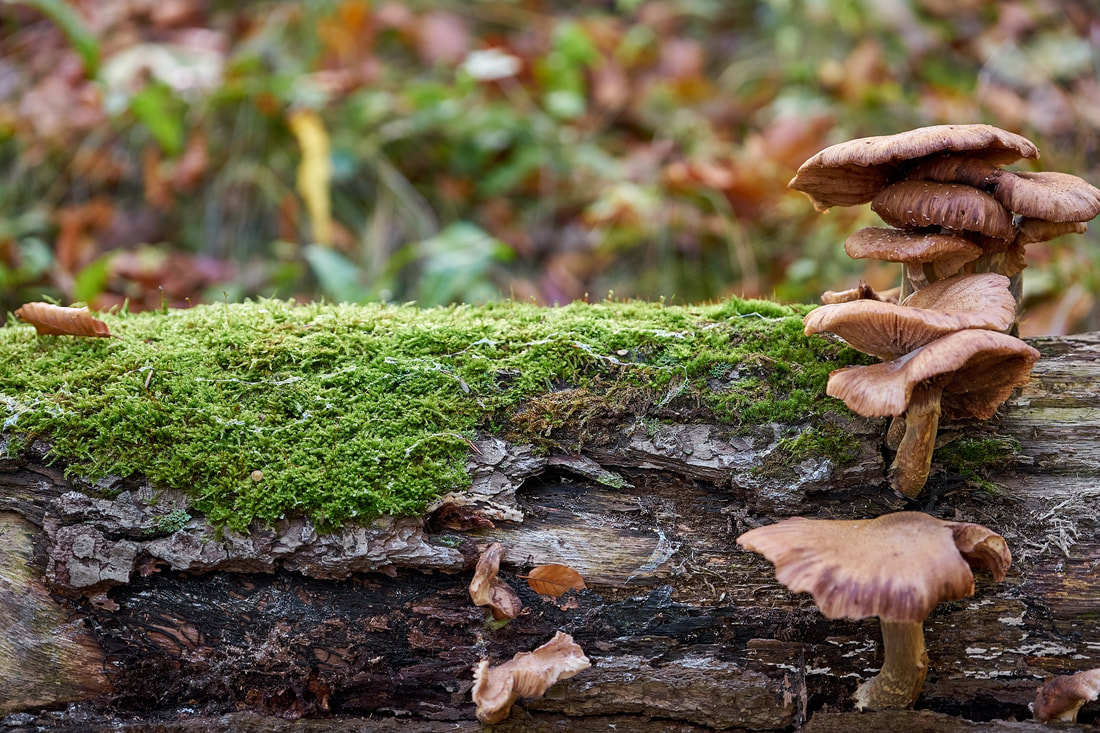

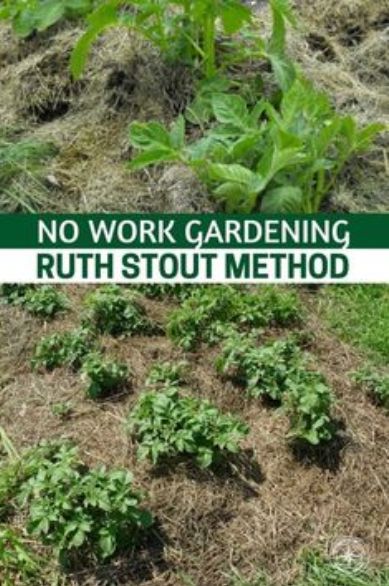
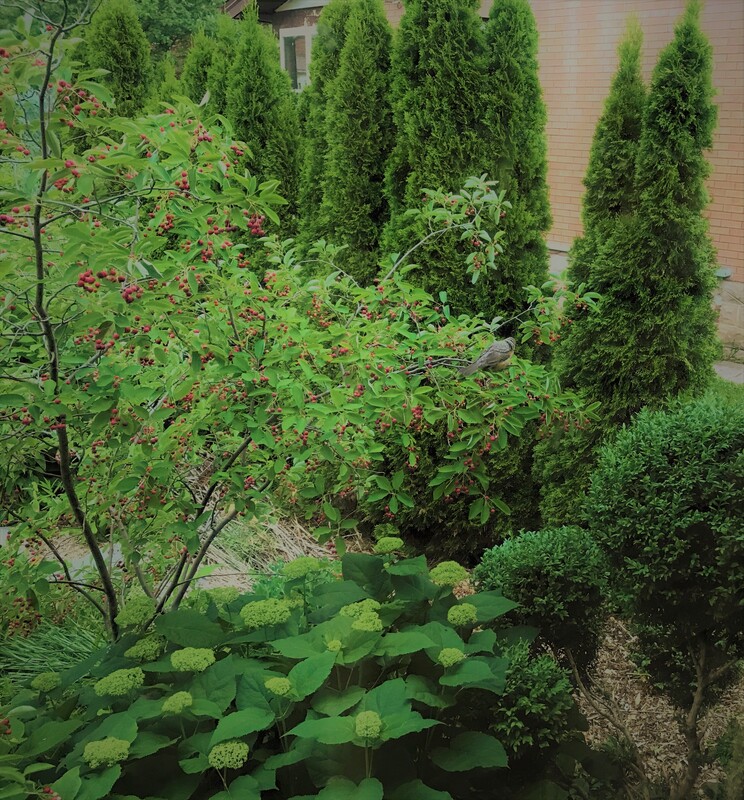


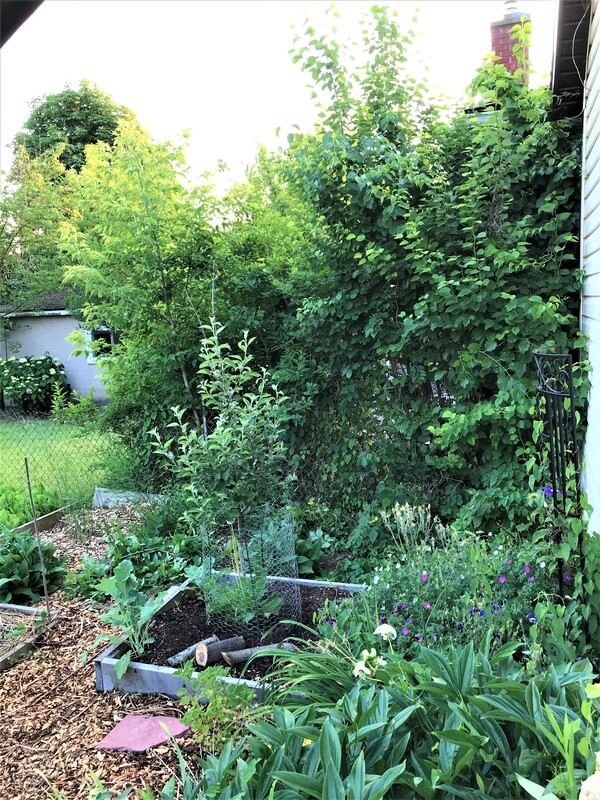




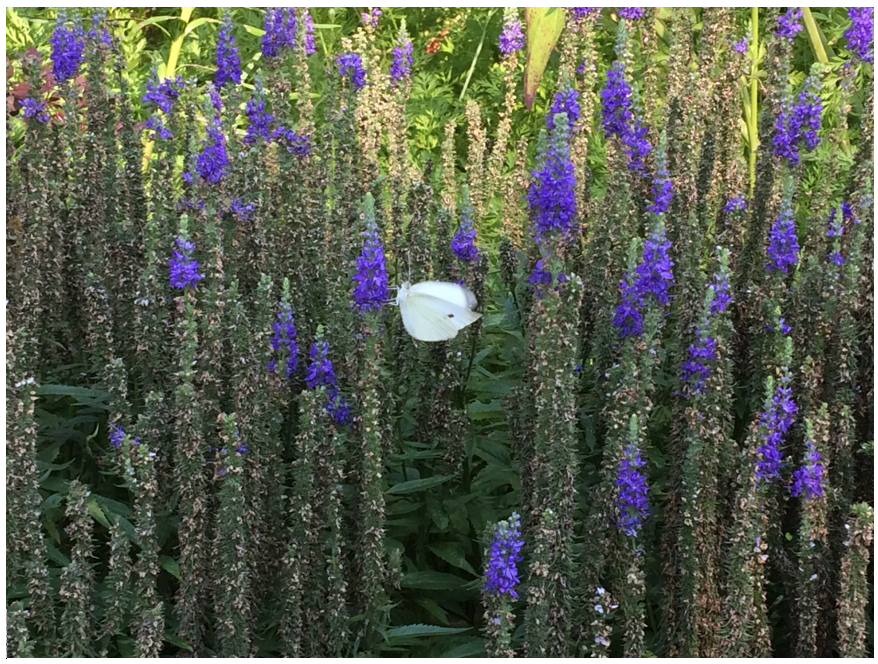
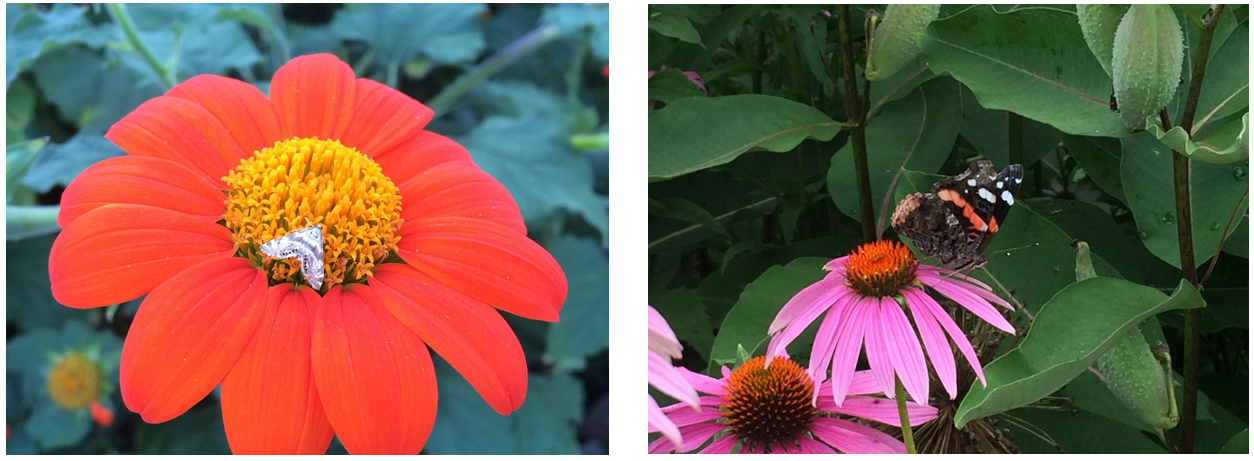

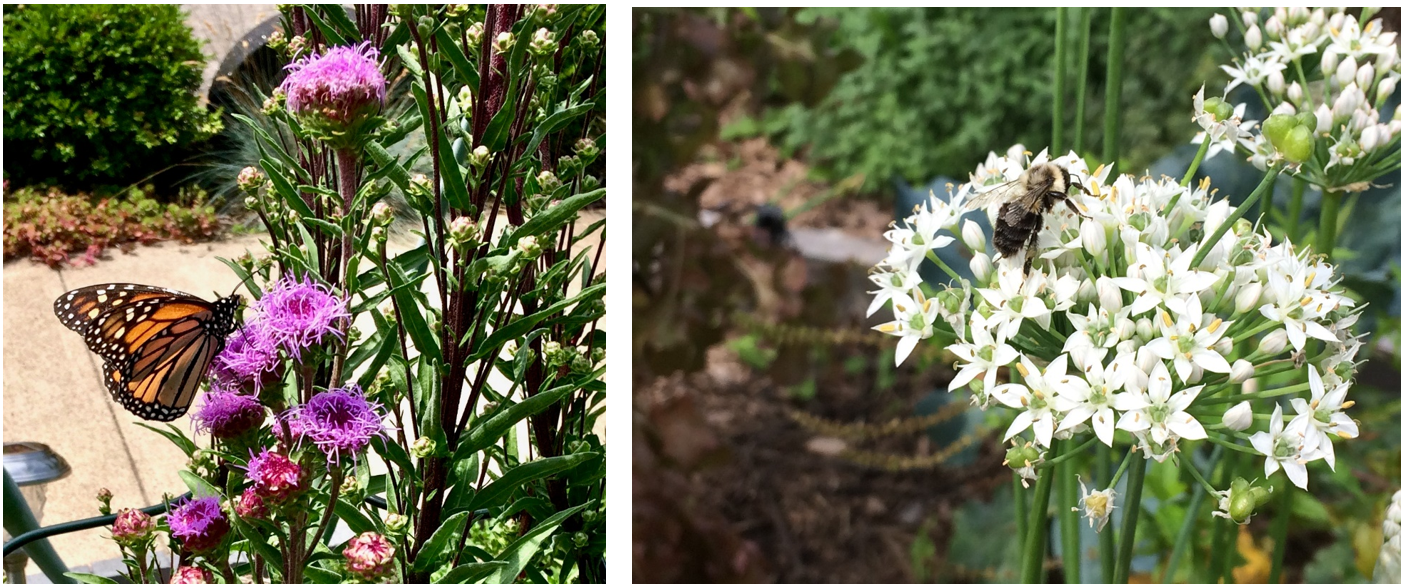
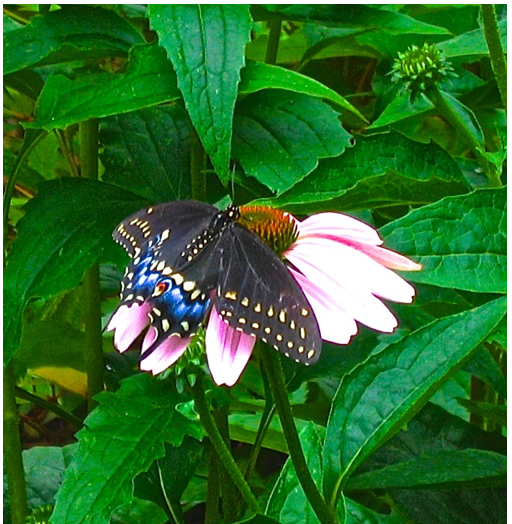
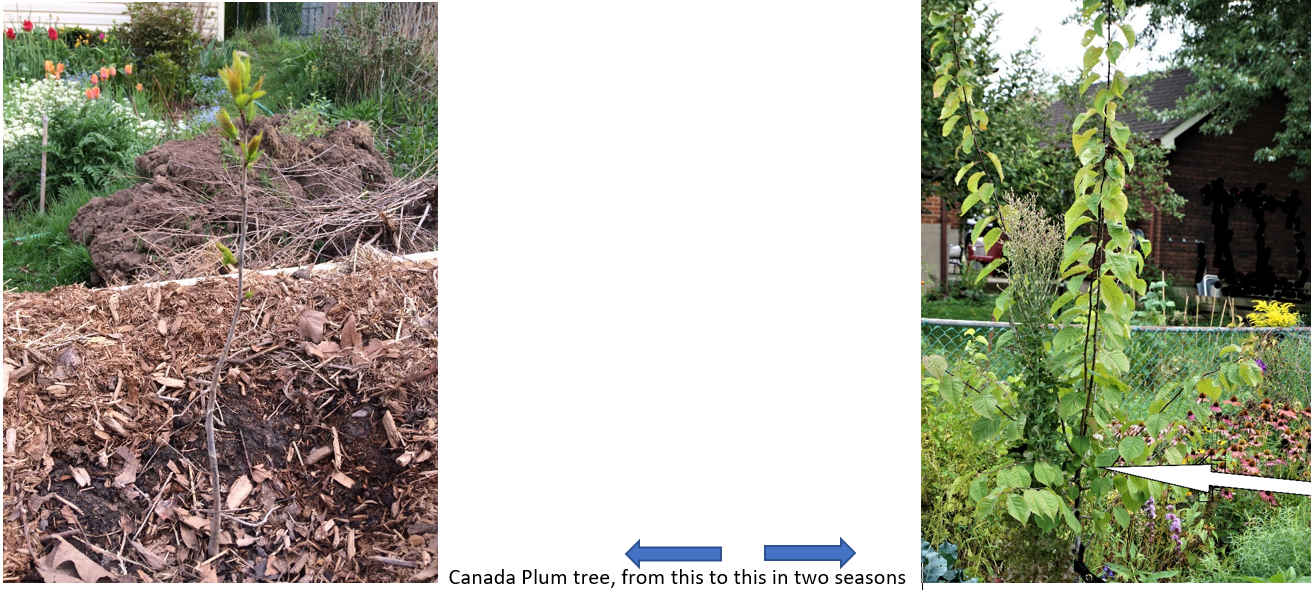

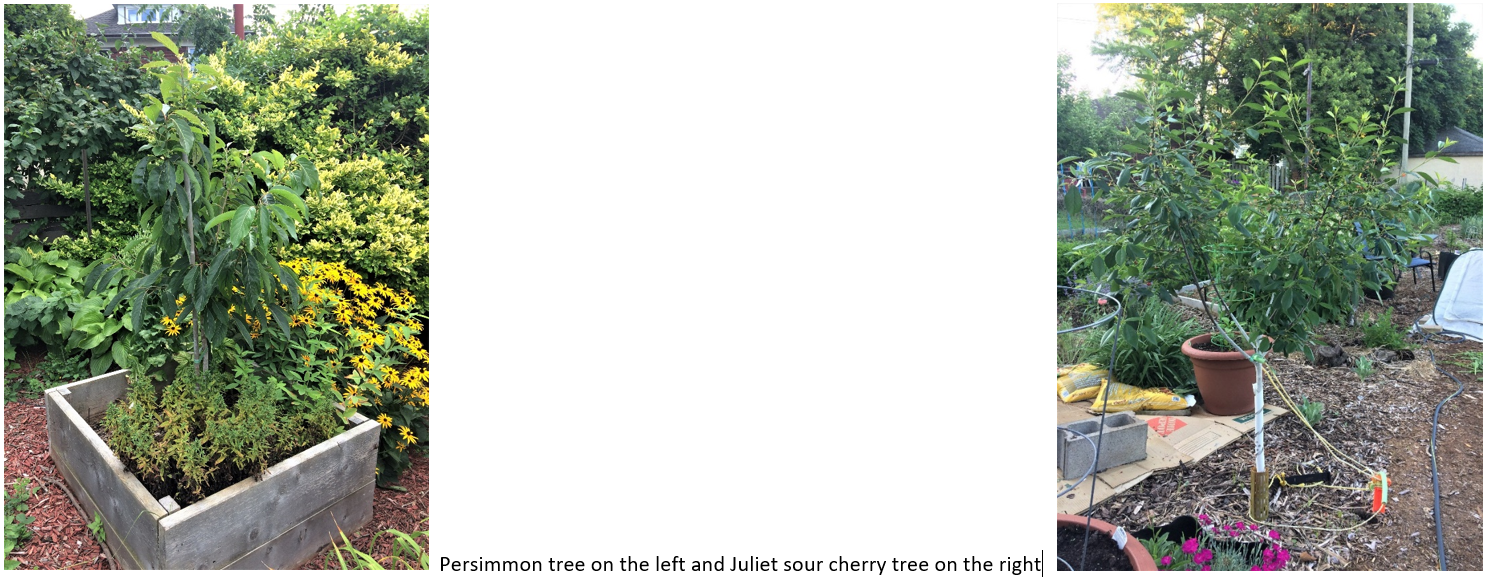



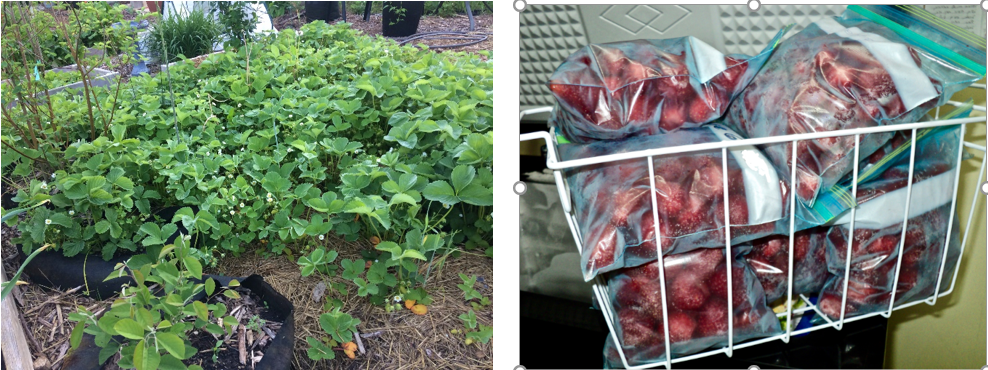
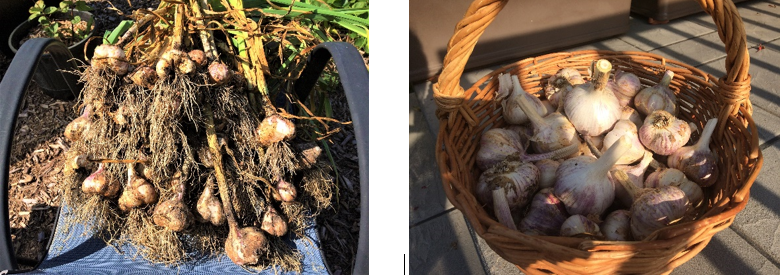




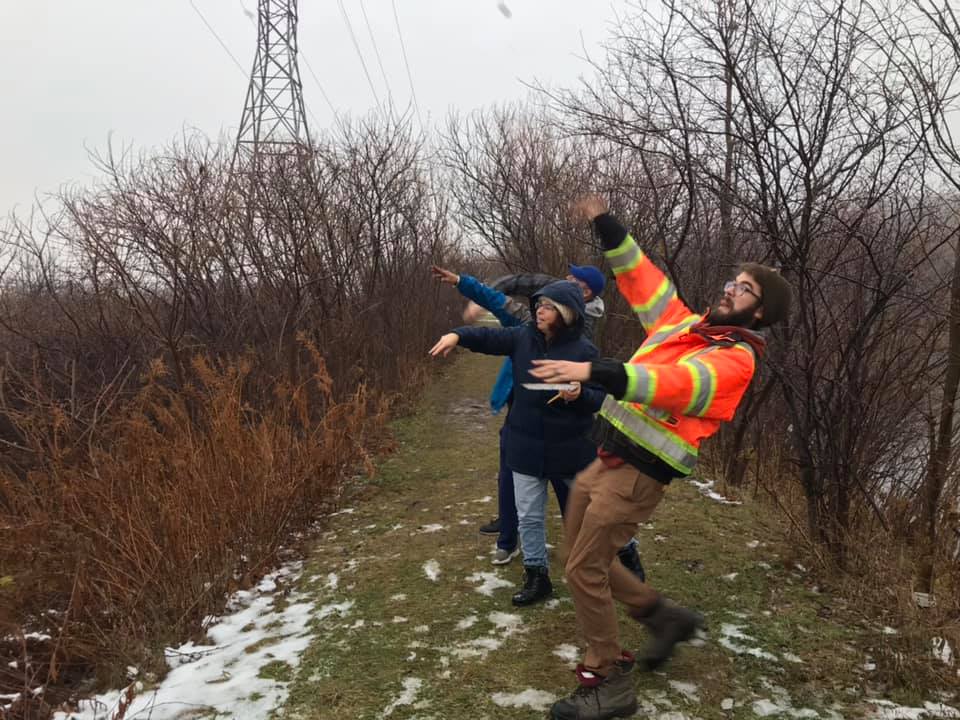





 RSS Feed
RSS Feed